Four Core Models Course Roadmap
Lesson Overview
Hello and welcome.
I am excited for the opportunity to help you master the four core requirements models presented in this course.
Let’s start with a quick introduction to the four models:
- Relationship Map. A relationship map is a visual diagram that allows you to see a broad view of connections between business entities. A relationship map presents an illustration of who plays a role in the business processes and operations, and helps you gain a high-level understanding of which roles interact and why.
- Use Case Diagram. A use case diagram is an illustration of a system’s intended functional user goals, its surrounding actors, and relationships between the actors and the user goals. More simply stated, a use case diagram is a visual that focuses on a specific system domain and conveys a high-level understanding of the user roles that interact with it and why.
- Context Diagram. A context diagram is a focused view of a system boundary and the user roles that supply information and materials to and receive information and materials from the system boundary.
- Process Map. A process map is an illustration of the interaction across multiple roles, and the sequence of activities performed by each role. A process map presents a visual of who does what and in what order.
Now, here is what you can expect in the course modules.
Following this course roadmap in module 1, you will see an overview of the purpose and structure of a facilitated workshop charter. Example workshop charters for the four core models are available in the downloadable course materials. These example charters and the facilitation tips that I share are intended to help you confidently build these models with your stakeholders.
In the last lesson in module 1, I will introduce a real project named the Shopping Cart Project. The project is depicted in several examples throughout the course that illustrate various aspects of the four core models.
The details about a relationship map, use case diagram, context diagram, and process map are discussed in modules 2 through 5, respectively.
The lessons within each respective module encompass the following topics:
- Definition of the model
- Symbols used in the model
- Facilitated workshop activities and tips for building the model
- A flawed example to test your understanding of the model
Each model is like an interlocking puzzle piece. When you connect the individual pieces, you see the big picture. While each model is effective in highlighting specific aspects of a project, there are significant benefits to using all four models. In module 6, we will look at how the models overlap and collectively help teams to see the big picture.
To maximize your on-demand learning experience, I encourage you to print the downloadable materials provided. These supplemental materials align with the visuals presented in the training videos and can improve your comprehension. Furthermore, the printed materials serve as quick-reference job aids following the training, which can improve retention of what you learned.
Thank you for choosing Requirements Quest for your requirements training needs. I look forward to helping you explore the Four Core Models for Scoping Requirements.
